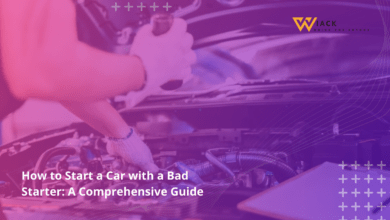Can You Insure a Car Not in Your Name?

Did you know that in 16 states, it’s legally required to have a bill of sale when purchasing a car from a private seller? This surprising fact highlights the importance of understanding the complexities surrounding car ownership and insurance. Whether you’re borrowing a friend’s car, driving a family member’s vehicle, or considering insuring a car that’s not technically yours, navigating the world of auto insurance can be tricky.
Introduction
When it comes to car insurance, the question of “Can you insure a car not in your name?” is more common than you might think. Many people find themselves in situations where they need to drive a vehicle they don’t own, and understanding the insurance implications is crucial. In this comprehensive guide, we’ll explore the ins and outs of insuring a car that’s not in your name, helping you navigate this complex topic with ease.
What Does It Mean to Insure a Car?
Before we dive into the specifics of insuring a car not in your name, let’s clarify what it means to insure a car. Car insurance is a contract between you and an insurance company that protects you financially in case of an accident, theft, or damage to your vehicle. When you insure a car, you’re essentially buying a safety net that covers:
- Liability: This covers damage you cause to other people’s property or injuries you cause to others in an accident.
- Collision: This covers damage to your own car in the event of an accident.
- Comprehensive: This covers non-collision related incidents like theft, vandalism, or natural disasters.
When you purchase car insurance, you’re agreeing to pay regular premiums in exchange for this protection. The insurance company, in turn, agrees to cover certain costs if you’re involved in an accident or your car is damaged.
Why Is Ownership Important?
Now, you might be wondering why ownership matters when it comes to car insurance. The reason is simple: insurance companies want to ensure that the person insuring the car has what’s called an “insurable interest” in the vehicle. This means that you would suffer a financial loss if something happened to the car.
When you own a car, your insurable interest is clear – you’ve invested money in the vehicle, and you’d lose that investment if the car were damaged or stolen. But when you don’t own the car, proving your insurable interest becomes more complicated.
Here’s why ownership is so important in the eyes of insurance companies:
- Financial responsibility: The owner of the car is typically considered the person most financially responsible for it.
- Risk assessment: Insurance companies use ownership information to assess the risk associated with insuring a particular vehicle and driver.
- Claims processing: In the event of a claim, ownership information helps determine who should receive any payouts.
- Legal compliance: Many states have laws requiring the car’s owner to be the primary policyholder on the insurance.
Understanding these basics sets the stage for our deeper dive into the question at hand: can you insure a car that’s not in your name? Let’s explore this further in the next section.
The General Rule: You Can’t Insure a Car Not in Your Name
As a general rule, you cannot insure a car that’s not in your name. This might seem frustrating, especially if you frequently drive a car owned by someone else, but there are good reasons for this policy. Let’s break down why this is typically the case and explore some of the exceptions.
State Laws and Regulations
One of the primary reasons you can’t usually insure a car that’s not in your name is because of state laws and regulations. Many states have specific requirements about who can insure a vehicle. For example:
- In New York, the name on the insurance card must match the name on the vehicle’s registration.
- California requires that the person insuring the car have an “insurable interest” in the vehicle, which is typically easiest to prove if you’re the owner.
- Some states, like Florida, require that the owner of the vehicle be listed as the named insured on the policy.
These laws are designed to prevent fraud and ensure that the person responsible for the vehicle (the owner) is also responsible for insuring it. They also help clarify liability in case of an accident.
Insurance Company Policies
In addition to state laws, many insurance companies have their own policies that prevent insuring a car not in your name. These policies are based on several factors:
- Risk assessment: Insurance companies use ownership information as part of their risk assessment process. They assume that the owner of a vehicle has the most interest in keeping it safe and well-maintained.
- Claims processing: When a claim is filed, it’s simpler for insurance companies to deal with the vehicle’s owner directly.
- Fraud prevention: By requiring the policyholder to be the vehicle owner, insurance companies can reduce the risk of insurance fraud.
- Liability clarity: In case of an accident, having the owner as the policyholder helps clarify who is ultimately responsible for the vehicle.
It’s important to note that these policies can vary between insurance companies. Some may be more flexible than others, especially in certain circumstances.
Exceptions to the Rule
While the general rule is that you can’t insure a car not in your name, there are some exceptions. These can include:
- Non-owner car insurance: This type of policy provides liability coverage for drivers who don’t own a car but frequently drive other people’s vehicles.
- Adding a driver to an existing policy: In many cases, you can be added as a driver to the owner’s existing policy, especially if you live in the same household.
- Proving insurable interest: In some cases, if you can prove you have a significant financial interest in the vehicle (even if you’re not the owner), an insurance company might allow you to insure it.
- Leased vehicles: If you’re leasing a car, you’ll typically be required to insure it, even though you’re not the legal owner.
- Classic car insurance: Some specialized policies for classic or collector cars allow for insurance by non-owners who are responsible for the vehicle’s care and maintenance.
These exceptions highlight that while insuring a car not in your name is generally not allowed, there are situations where it might be possible. In the next section, we’ll explore some of these circumstances in more detail.
Circumstances Where You Might Be Able to Insure a Car Not in Your Name
While the general rule is that you can’t insure a car that’s not in your name, there are certain circumstances where exceptions can be made. Let’s explore these situations in detail to help you understand when and how you might be able to insure a vehicle that’s not technically yours.
Proof of Permission
One of the most common scenarios where you might be able to insure a car not in your name is when you have explicit permission from the owner. This situation often arises in family settings or with long-term borrowing arrangements. Here’s what you need to know:
- Written permission: Many insurance companies will require a written statement from the vehicle’s owner giving you permission to insure and drive the car.
- Proof of regular use: You may need to demonstrate that you’re the primary driver of the vehicle, even if you’re not the owner.
- Insurable interest: You’ll need to show that you have a financial stake in the vehicle’s wellbeing. This could be because you rely on it for work or because you’re responsible for its maintenance.
- Co-signing the policy: In some cases, the owner may need to co-sign the insurance policy with you.
Remember, even with permission, not all insurance companies will allow this arrangement. It’s essential to be upfront about the situation when shopping for insurance.
Temporary Insurance for Short-Term Use
If you need to insure a car not in your name for a short period, temporary or short-term insurance might be an option. This type of insurance is designed for situations like:
- Borrowing a friend’s car for a road trip
- Test driving a car you’re considering buying
- Using a rental car for an extended period
Temporary insurance policies typically last from one day to a few months. Here’s what you should know about this option:
- Availability: Not all insurance companies offer temporary policies, and they’re not available in all states.
- Coverage: These policies usually provide basic liability coverage, but may not include comprehensive or collision coverage.
- Cost: Short-term policies can be more expensive on a per-day basis than regular insurance.
- Requirements: You’ll still need permission from the vehicle’s owner, and you may need to provide proof of your regular insurance.
While temporary insurance can be a good solution for short-term needs, it’s not suitable for long-term arrangements.
Shared Ownership
In some cases, you might share ownership of a vehicle with someone else. This is common in situations like:
- Married couples
- Business partnerships
- Parent-child arrangements
When you share ownership of a vehicle, insuring it becomes more straightforward. Here’s how it typically works:
- Both names on the title: If both your name and the other owner’s name are on the vehicle’s title, either of you can insure the car.
- Joint policy: You can often take out a joint insurance policy that covers both owners.
- Primary driver: The person who drives the car most often should typically be listed as the primary driver on the policy.
- Disclosing shared ownership: It’s important to be honest with your insurance company about the shared ownership arrangement.
Shared ownership can make insuring a car easier, but it also means shared responsibility. Make sure you trust the person you’re sharing ownership with before entering into this arrangement.
Leasing
When you lease a car, you’re essentially renting it long-term from a leasing company. Even though you don’t own the car outright, you’re typically required to insure it. Here’s what you need to know about insuring a leased car:
- Leaseholder requirements: The leasing company will usually require you to maintain a certain level of insurance coverage.
- Named insured: You’ll be listed as the named insured on the policy, even though you don’t own the car.
- Additional insured: The leasing company may require that they be listed as an additional insured on the policy.
- Higher coverage limits: Leasing companies often require higher liability limits than state minimums.
- Gap insurance: This type of insurance covers the difference between what you owe on the lease and what the car is worth if it’s totaled. It’s often required for leased vehicles.
Leasing is one of the most straightforward situations where you can insure a car that’s not technically in your name. However, it’s important to carefully review your lease agreement to understand all the insurance requirements.
Understanding these circumstances can help you navigate situations where you need to insure a car that’s not in your name. However, it’s always best to consult with insurance professionals and be transparent about your situation to ensure you’re properly covered.
Consequences of Insuring a Car Not in Your Name
While there are some circumstances where you might be able to insure a car not in your name, attempting to do so without proper authorization or under false pretenses can lead to serious consequences. It’s crucial to understand these potential outcomes before you consider insuring a vehicle that’s not yours.
Denial of Coverage
One of the most immediate and significant consequences of improperly insuring a car not in your name is the potential for denial of coverage. This means that if you’re involved in an accident or your car is damaged, your insurance company may refuse to pay out any claims. Here’s why this is so serious:
- Financial liability: If your coverage is denied, you could be personally responsible for all damages and injuries resulting from an accident. This could amount to tens or even hundreds of thousands of dollars.
- Legal issues: Driving without valid insurance is illegal in most states. If it’s discovered that your insurance is invalid, you could face legal penalties.
- Future insurability: Having a claim denied due to improper insurance can make it difficult to obtain insurance in the future, even for cars you do own.
- Credit impact: If you’re unable to pay for damages out of pocket, you might face lawsuits or collections actions, which can severely damage your credit score.
It’s important to remember that insurance companies have teams dedicated to investigating claims. If there’s any discrepancy in ownership or if they suspect fraud, they will likely uncover it during the claims process.
Legal Issues
Attempting to insure a car that’s not in your name can also lead to various legal issues. These can range from minor infractions to serious criminal charges, depending on the circumstances. Here are some potential legal consequences:
- Misrepresentation: If you knowingly provide false information to an insurance company, you could be charged with insurance fraud, which is a criminal offense in most jurisdictions.
- Driving without insurance: If your policy is invalidated due to improper insuring, you could be charged with driving without insurance, which carries its own set of penalties.
- Civil liability: In the event of an accident, you could face civil lawsuits from other parties involved if your insurance is deemed invalid.
- License suspension: In some states, driving without valid insurance can result in license suspension or revocation.
- Registration issues: Many states require proof of insurance to register a vehicle. If your insurance is found to be invalid, your vehicle registration could be suspended or revoked.
The severity of these legal issues can vary greatly depending on the specific circumstances and your location. However, even minor legal issues related to car insurance can have long-lasting effects on your driving record and insurability.
Fraud Charges
In the most serious cases, attempting to insure a car not in your name could lead to fraud charges. Insurance fraud is a serious crime that can result in severe penalties. Here’s what you need to know:
- Definition of fraud: Insurance fraud occurs when someone knowingly submits false information to an insurance company for financial gain. This could include lying about vehicle ownership to obtain insurance.
- Types of fraud: There are two main types of insurance fraud:
- Soft fraud: Exaggerating a legitimate claim or misrepresenting information on an application.
- Hard fraud: Deliberately fabricating a claim or situation to deceive an insurance company.
- Penalties: The penalties for insurance fraud can be severe, including:
- Fines: These can range from thousands to hundreds of thousands of dollars.
- Jail time: Depending on the severity of the fraud, you could face significant prison time.
- Restitution: You may be required to pay back any fraudulently obtained insurance payouts.
- Criminal record: A fraud conviction will result in a criminal record, which can affect future employment and housing opportunities.
- Industry-wide consequences: If you’re convicted of insurance fraud, you may find it difficult or impossible to obtain insurance in the future. Many insurance companies share information about fraudulent activities.
- Civil consequences: In addition to criminal charges, you could face civil lawsuits from the insurance company or other parties involved.
It’s crucial to understand that insurance companies take fraud very seriously and invest significant resources in detecting and prosecuting fraudulent activities. Even if you think you’re just bending the rules a little, the consequences can be severe.
The potential consequences of improperly insuring a car not in your name are significant and far-reaching. They can affect your finances, your legal standing, and your future insurability. It’s always best to be honest and upfront with insurance companies about your situation. If you’re unsure about how to properly insure a vehicle you don’t own, consult with insurance professionals or legal experts for guidance.
Remember, while it might seem tempting to try to insure a car that’s not in your name, the risks far outweigh any potential benefits. In the next section, we’ll explore some alternatives that can help you legally and safely insure a car you don’t own.
Alternatives for Insuring a Car Not in Your Name
If you find yourself in a situation where you need to drive a car that’s not in your name, there are several alternatives to consider that can provide you with the necessary coverage without risking the serious consequences we discussed earlier. Let’s explore these options in detail.
Adding a Named Driver
One of the most straightforward solutions is to be added as a named driver on the vehicle owner’s existing insurance policy. This is a common practice for families, couples, or even friends who share vehicles regularly. Here’s what you need to know about this option:
- How it works: The vehicle owner contacts their insurance company and requests to add you as a named driver on their policy.
- Benefits:
- You’re fully covered when driving the vehicle.
- It’s usually cheaper than taking out a separate policy.
- The process is typically quick and easy.
- Considerations:
- The vehicle owner’s premiums may increase.
- Any claims you make will affect the owner’s insurance record.
- Some insurers may have restrictions on who can be added (e.g., must live at the same address).
- Best for: People who regularly drive a car owned by someone they have a close relationship with, such as a partner, parent, or roommate.
- Process:
- The vehicle owner contacts their insurance company.
- They provide your details (name, date of birth, driving history).
- The insurer updates the policy and may adjust the premium.
Remember, as a named driver, you should only be driving the car occasionally. If you’re the main driver of the vehicle, you should be listed as such on the policy to avoid “fronting,” which is a form of insurance fraud.
Transferring Ownership
If you’re going to be the primary driver of the vehicle for an extended period, transferring ownership might be the best solution. This involves legally changing the vehicle’s title to your name. Here’s what you need to know about this option:
- Process:
- Obtain a bill of sale from the current owner.
- Visit your local DMV to transfer the title.
- Pay any required fees and taxes.
- Register the vehicle in your name.
- Benefits:
- You can insure the car in your own name without any issues.
- You have full control over the vehicle and its insurance.
- It’s a clear-cut solution that avoids any legal gray areas.
- Considerations:
- There may be costs associated with transferring ownership (e.g., taxes, registration fees).
- The current owner needs to be willing to transfer ownership.
- If there’s a loan on the vehicle, it may need to be paid off or transferred.
- Best for: Situations where you’ll be the primary user of the vehicle for the foreseeable future, such as when taking over a family member’s car.
- After transfer:
- Once the vehicle is in your name, shop around for insurance quotes.
- Provide the new title and registration to your chosen insurer.
Remember, transferring ownership is a significant legal step. Make sure you’re prepared for the responsibilities that come with vehicle ownership before proceeding.
Temporary Insurance for Short-Term Use
If you only need to drive the car for a short period, temporary car insurance might be the perfect solution. This type of insurance provides coverage for a specific, limited time period. Here’s what you should know:
- How it works: You purchase a policy that covers you for a set period, typically ranging from one day to a few months.
- Benefits:
- Flexibility for short-term needs.
- You don’t need to be added to the owner’s policy.
- It can be quickly arranged, often online or over the phone.
- Considerations:
- It’s usually more expensive than regular insurance on a per-day basis.
- Not all insurers offer this type of coverage.
- There may be restrictions on who can qualify (e.g., age, driving history).
- Best for: Situations like borrowing a friend’s car for a road trip, using a rental car, or test driving a car you’re considering buying.
- Process:
- Research insurers that offer temporary coverage in your area.
- Provide details about yourself and the vehicle.
- Choose your coverage period and pay for the policy.
- Important note: Always get permission from the vehicle owner before purchasing temporary insurance for their car.
Non-Owner Car Insurance
If you frequently drive cars that aren’t yours but don’t own a vehicle yourself, non-owner car insurance might be a good option. This type of policy provides liability coverage when you’re driving vehicles you don’t own. Here’s what you need to know:
- How it works: You purchase a policy that covers you, not a specific vehicle. It typically provides liability coverage when you’re driving cars you don’t own.
- Benefits:
- Provides continuous coverage even when you’re between cars.
- Can be cheaper than being added to multiple policies if you drive different cars.
- Helps maintain your insurance history, which can lead to better rates in the future.
- Considerations:
- Doesn’t include comprehensive or collision coverage.
- Not available from all insurance companies.
- May not be necessary if you rarely drive.
- Best for: People who don’t own a car but frequently rent or borrow vehicles.
- Process:
- Contact insurance companies to find out if they offer non-owner policies.
- Provide your personal information and driving history.
- Choose your coverage limits and pay for the policy.
- Important note: This type of policy doesn’t replace the primary insurance on any vehicle you drive. It’s supplemental coverage for you as a driver.
By exploring these alternatives, you can find a solution that provides the coverage you need without the risks associated with improperly insuring a car not in your name. Remember, the best option for you will depend on your specific situation, how often you’ll be driving the vehicle, and your relationship with the vehicle’s owner.
Always be honest with insurance companies about your circumstances. If you’re unsure about the best course of action, consider consulting with an insurance agent or broker who can provide personalized advice based on your situation.
Conclusion
Navigating the world of car insurance can be complex, especially when you’re dealing with a vehicle that’s not in your name. As we’ve explored throughout this article, the question “Can you insure a car not in your name?” doesn’t have a simple yes or no answer. While the general rule is that you can’t insure a car you don’t own, there are exceptions and alternatives that can provide the coverage you need in various situations.
Let’s recap the key points we’ve covered:
- The general rule: In most cases, you can’t insure a car that’s not in your name due to state laws, insurance company policies, and the concept of insurable interest.
- Exceptions: There are some circumstances where you might be able to insure a car not in your name, such as when you have explicit permission from the owner, in shared ownership situations, or when leasing a vehicle.
- Consequences: Attempting to improperly insure a car not in your name can lead to serious consequences, including denial of coverage, legal issues, and even fraud charges.
- Alternatives: There are several alternatives to consider, including:
- Being added as a named driver to the owner’s policy
- Transferring ownership of the vehicle
- Purchasing temporary insurance for short-term use
- Getting non-owner car insurance if you frequently drive cars you don’t own
Remember, the most important thing is to be honest and transparent about your situation. Insurance is all about managing risk, and insurance companies need accurate information to properly assess and price that risk. Trying to circumvent the rules or misrepresent your situation can lead to serious consequences that far outweigh any potential short-term benefits.
If you find yourself in a situation where you need to drive a car that’s not in your name, take the time to explore your options. Speak with insurance professionals, consider the alternatives we’ve discussed, and choose the solution that best fits your specific circumstances.
Ultimately, the goal is to ensure that you’re properly covered when you’re behind the wheel, regardless of whose name is on the vehicle’s title. By understanding the rules, exploring your options, and making informed decisions, you can navigate this complex aspect of car insurance with confidence.
Remember, when it comes to insurance, it’s always better to be safe than sorry. If you’re ever in doubt about your coverage or the legality of your insurance situation, don’t hesitate to seek professional advice. Your financial security and peace of mind are worth the extra effort.
Drive safely, stay insured, and enjoy the road ahead!
Get the latest car news, reviews, and prices at Wiack.com. Your one-stop destination for all things automotive.





